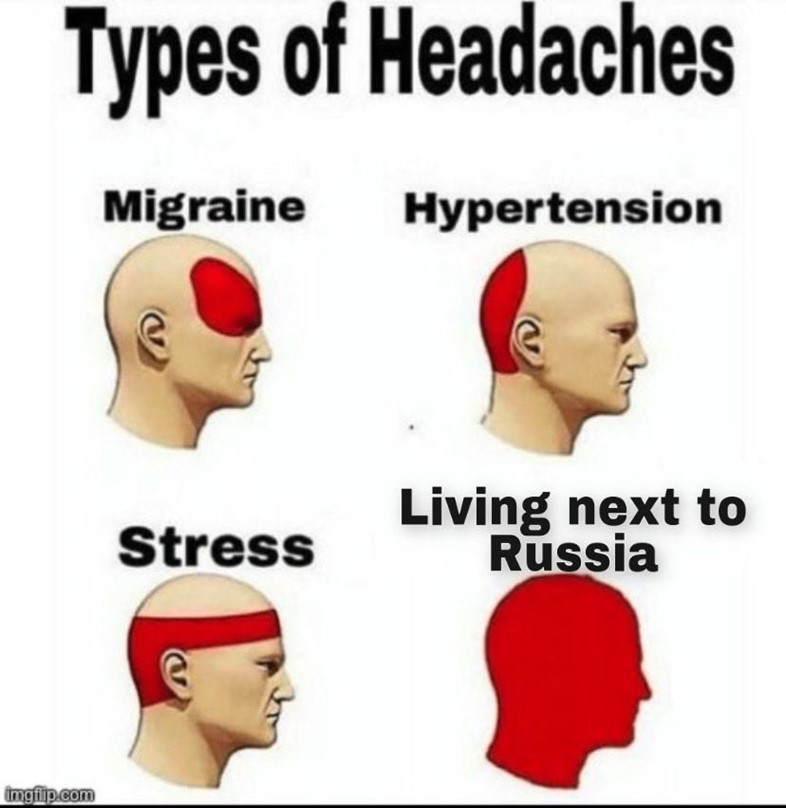What happens when governments trade traditional diplomacy for rocket emojis, Simpsons memes, and throwing shade on the world stage?
This article was originally published on February 2, 2022
A spectre is haunting the Twitter timeline: the spectre of the cringeworthy corporate meme. Where is the out-of-touch tech company that hasn’t tried to suck the last dregs of cultural relevance out of a tired, millennial meme? Where is the snack manufacturer that isn’t accused of acting horny on main? The airline that engages with climate critics, and doesn’t simply deflect by slapping a funny face filter on one of its planes?
Two conclusions can be drawn from this post-ironic, late-capitalist hellscape. One, the meme is already acknowledged as a powerful tool for cultivating a ‘relatable’ brand in the year 2022. Two, governments desperate to revitalise their image were going to catch on sooner or later, and it was bound to take us to new levels of social media-induced despair.
Yes, over the last few years, whole countries’ Twitter timelines, formerly filled with formal announcements and the odd tourism-boosting snapshot, have also been overtaken by emojis, irony, and middle-of-the-road memes. At best, these can be seen as an awkward attempt to boost engagement among citizens who spend more time online than ever before, by institutions that are – and will remain – objectively uninteresting. (Is the US Department of Health and Human Services really going to win us over with Doge speak? Probably not.) More recently, though, state-mandated memes seem to have taken a turn for the worse.
Take this year’s Valentine’s Day post from the Israel Defense Forces, for example: a pastel pink infographic that compares “the situation in the Middle East” to a toxic relationship. Besides the obvious question (why is the IDF posting Valentine’s infographics?) this raises some pretty clear concerns about the memeification of international relations, and how it could end in diplomatic disaster. It’s also blatantly hypocritical – while calling out Iran for its “financial control” and “self-centred behaviour” in the Middle East, the IDF image conveniently glosses over the State of Israel’s “toxic relationship” with the Palestinian people.
Of course, this is nothing compared to a thread from the State of Israel itself, shared at the height of last year’s bombardment of Gaza, which reduced the violence to a string of rocket emojis. “Just to give you all some perspective, these are the total amount of rockets shot at Israeli civilians,” read a caption to the May 17 post from the official Israel Twitter account, which immediately caused outrage for trivialising dozens of deaths and erasing the disproportionate number of Palestinian fatalities.
🚀🚀🚀🚀🚀🚀🚀🚀🚀🚀🚀🚀🚀🚀🚀🚀🚀🚀🚀🚀🚀🚀🚀🚀🚀🚀🚀🚀🚀🚀🚀🚀🚀🚀🚀🚀🚀🚀🚀🚀🚀🚀🚀🚀🚀🚀🚀🚀🚀🚀🚀🚀🚀🚀🚀🚀🚀🚀🚀🚀🚀🚀🚀🚀🚀🚀🚀🚀🚀🚀🚀🚀🚀🚀🚀🚀🚀🚀🚀🚀🚀🚀🚀🚀🚀🚀🚀🚀🚀🚀🚀🚀🚀🚀🚀🚀🚀🚀🚀🚀🚀🚀🚀🚀🚀🚀🚀🚀🚀🚀🚀🚀🚀🚀🚀🚀🚀🚀🚀🚀🚀🚀🚀🚀🚀🚀🚀🚀🚀🚀🚀🚀🚀🚀🚀🚀🚀🚀🚀🚀
— Israel ישראל (@Israel) May 17, 2021
Similarly, Ukraine has turned to memes to spread the word about growing tensions along its Russian border, where Vladimir Putin continues to build military forces. “Stop saying ‘Ukraine crisis’. There is no crisis. There is a bad neighbour,” reads a statement posted to Ukraine’s official Twitter last month, embedded in a grainy screenshot of Lisa Simpson. Another Ukrainian post claims to reveal “Putin’s real fears” via an image of Joe Rogan’s dog chilling next to a life-size replica of the werewolf from An American Werewolf in London (AKA the ‘Dog vs. Werewolf’ meme). There have been countless other examples.
So far, Russia hasn’t dipped into its own arsenal of memes during the standoff (though the Russian Embassy isn’t above tacking its own inappropriately lighthearted images onto statements about global politics). Then again, maybe it doesn’t need to, since the press images for Putin’s meeting with French president Emmanuel Macron earlier this month already seemed primed for the meme-o-sphere.
— Ukraine / Україна (@Ukraine) December 7, 2021
At this point, you might be wondering: WTF is going on? Aren’t we all. But seriously, it’s probably worth considering why a country on the brink of war is communicating via Simpsons memes, or why international diplomacy is being carried out in all-caps Impact font and cutesy infographics. Why are governments out there trying to build their personal brand, instead of actually confronting the issues that caused them to fall out of favour in the first place? Are they really willing to escalate conflict or minimise national disasters for the Twitter clout?
Maybe we should have seen this coming all along, though, given the commercialisation of memes and embrace of cartoonish politics over the last half-decade. Donald Trump and his fanbase famously liked to do “a little trolling”, and that landed him in the White House (where he continued to post ridiculous memes that painted him as an anti-establishment hero). While he ultimately failed to shitpost his way into a second term, it’s not too far-fetched to suggest that his presidential tweet calling Kim Jong Un “short and fat” set the stage for a new kind of political discourse.
On the other hand, maybe this is just what propaganda looks like in 2022: sarcastic memes and emojis dreamt up by a particularly unimaginative millennial, a bizarre amalgamation of what politicians and their social media managers think the next generation wants to see from their government. It’s tempting to imagine that it’s a new kind of psychological warfare, even, but no, it’s probably just the usual cringe on an international scale. That doesn’t mean that the wrong meme in the wrong hands couldn’t kick off WW3, though.
Valentine's Day is all about love—but love can be dangerous. Here are some signs of a toxic relationship to look out for: pic.twitter.com/WTSocyV30o
— Israel Defense Forces (@IDF) February 14, 2022




